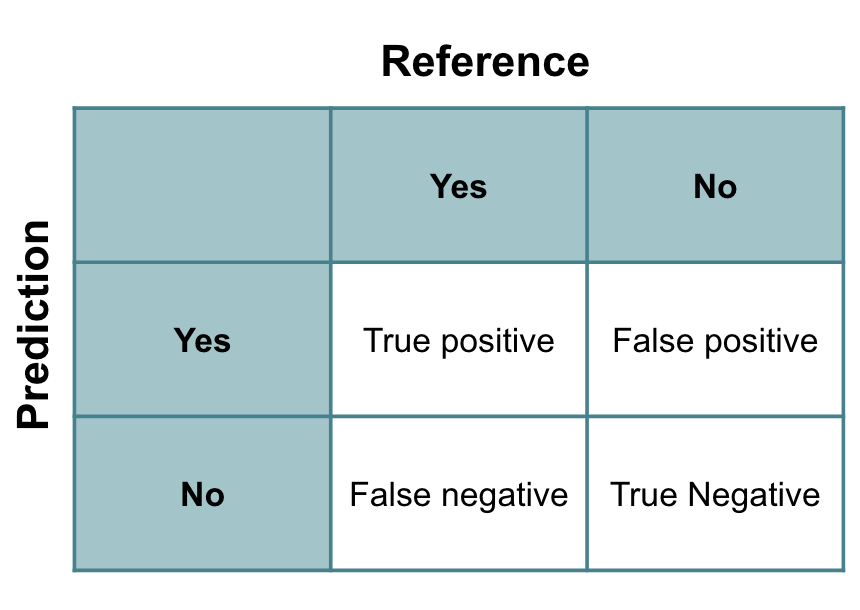Confusion matrix
Machine Learning with caret in R

Zach Mayer
Data Scientist at DataRobot and co-author of caret
Confusion matrix

Confusion matrix
# Fit a model
model <- glm(Class ~ ., family = binomial(link = "logit"), train)
p <- predict(model, test, type = "response")
summary(p)
Min. 1st Qu. Median Mean 3rd Qu. Max.
0.0000 0.0000 0.9885 0.5296 1.0000 1.0000
# Turn probabilities into classes and look at their frequencies
p_class <- ifelse(p > 0.50, "M", "R")
table(p_class)
p_class
M R
44 39
Confusion matrix
- Make a 2-way frequency table
- Compare predicted vs. actual classes
# Make simple 2-way frequency table
table(p_class, test[["Class"]])
p_class M R
M 13 31
R 30 9
Confusion matrix
# Use caret’s helper function to calculate additional statistics
confusionMatrix(p_class, test[["Class"]])
Reference
Prediction M R
M 13 31
R 30 9
Accuracy : 0.2651
95% CI : (0.1742, 0.3734)
No Information Rate : 0.5181
P-Value [Acc > NIR] : 1
Kappa : -0.4731
Mcnemar's Test P-Value : 1
Sensitivity : 0.3023
Specificity : 0.2250
Pos Pred Value : 0.2955
Neg Pred Value : 0.2308
Let's practice!
Machine Learning with caret in R

